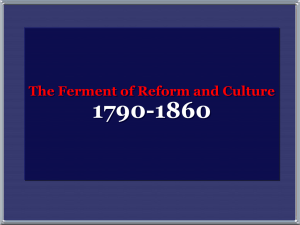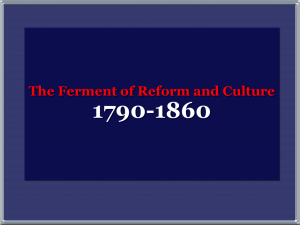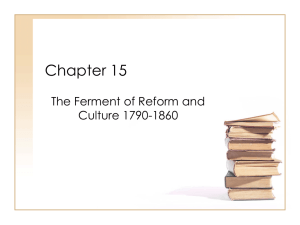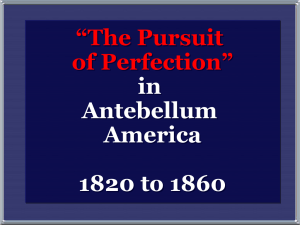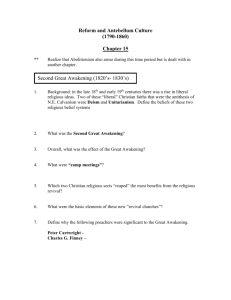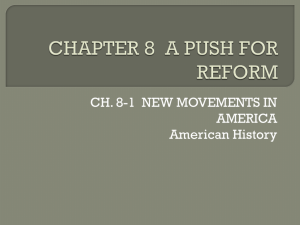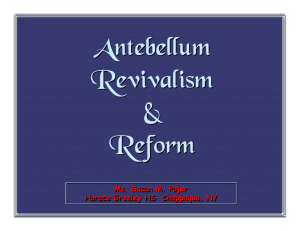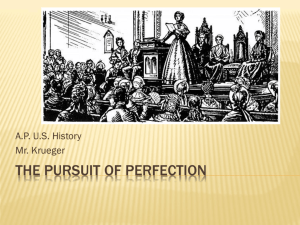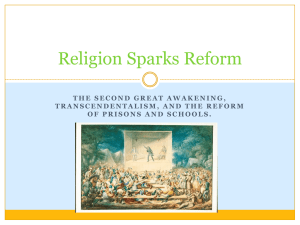Name Period ______ The Age of Reform The Great Awakening
advertisement
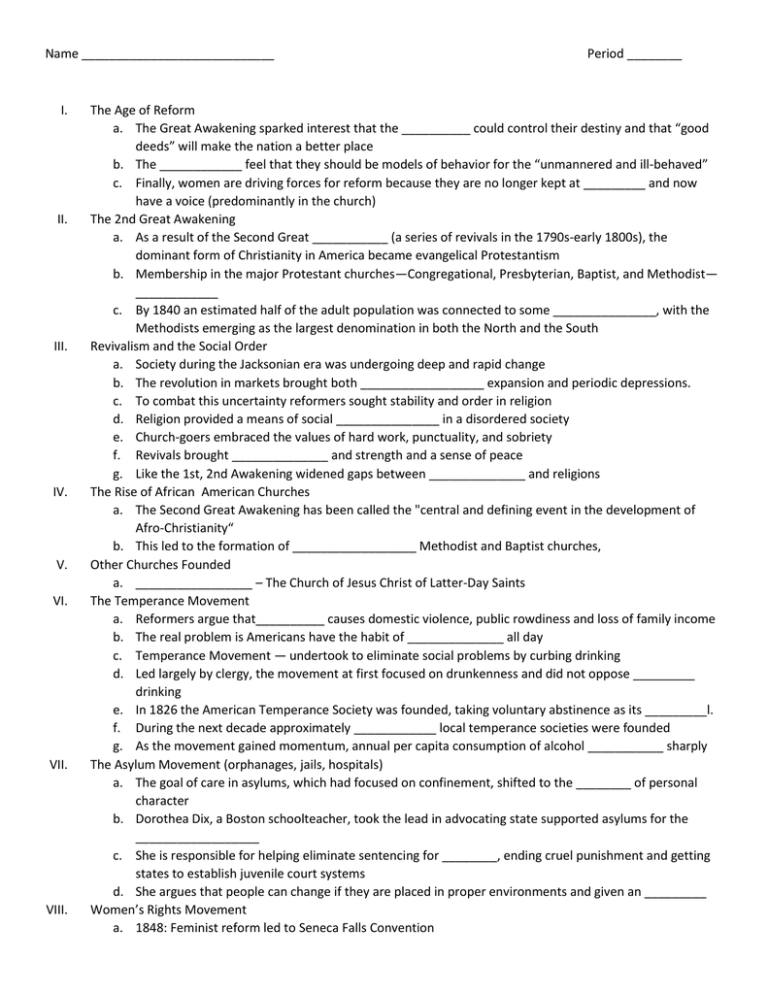
Name ____________________________ I. II. III. IV. V. VI. VII. VIII. Period ________ The Age of Reform a. The Great Awakening sparked interest that the __________ could control their destiny and that “good deeds” will make the nation a better place b. The ____________ feel that they should be models of behavior for the “unmannered and ill-behaved” c. Finally, women are driving forces for reform because they are no longer kept at _________ and now have a voice (predominantly in the church) The 2nd Great Awakening a. As a result of the Second Great ___________ (a series of revivals in the 1790s-early 1800s), the dominant form of Christianity in America became evangelical Protestantism b. Membership in the major Protestant churches—Congregational, Presbyterian, Baptist, and Methodist— ____________ c. By 1840 an estimated half of the adult population was connected to some _______________, with the Methodists emerging as the largest denomination in both the North and the South Revivalism and the Social Order a. Society during the Jacksonian era was undergoing deep and rapid change b. The revolution in markets brought both __________________ expansion and periodic depressions. c. To combat this uncertainty reformers sought stability and order in religion d. Religion provided a means of social _______________ in a disordered society e. Church-goers embraced the values of hard work, punctuality, and sobriety f. Revivals brought ______________ and strength and a sense of peace g. Like the 1st, 2nd Awakening widened gaps between ______________ and religions The Rise of African American Churches a. The Second Great Awakening has been called the "central and defining event in the development of Afro-Christianity“ b. This led to the formation of __________________ Methodist and Baptist churches, Other Churches Founded a. _________________ – The Church of Jesus Christ of Latter-Day Saints The Temperance Movement a. Reformers argue that__________ causes domestic violence, public rowdiness and loss of family income b. The real problem is Americans have the habit of ______________ all day c. Temperance Movement — undertook to eliminate social problems by curbing drinking d. Led largely by clergy, the movement at first focused on drunkenness and did not oppose _________ drinking e. In 1826 the American Temperance Society was founded, taking voluntary abstinence as its _________l. f. During the next decade approximately ____________ local temperance societies were founded g. As the movement gained momentum, annual per capita consumption of alcohol ___________ sharply The Asylum Movement (orphanages, jails, hospitals) a. The goal of care in asylums, which had focused on confinement, shifted to the ________ of personal character b. Dorothea Dix, a Boston schoolteacher, took the lead in advocating state supported asylums for the __________________ c. She is responsible for helping eliminate sentencing for ________, ending cruel punishment and getting states to establish juvenile court systems d. She argues that people can change if they are placed in proper environments and given an _________ Women’s Rights Movement a. 1848: Feminist reform led to Seneca Falls Convention IX. X. XI. XII. b. Significance: launched modern _________________________movement c. Established the arguments and the program for the women’s rights movement for the remainder of the century Abolition Movement a. William Lloyd Garrison, publisher of the The Liberator, first appeared in 1831 and sent shock waves across the entire country b. He repudiated gradual emancipation and embraced immediate end to _____________ at once c. He advocated racial _______and argued that slaveholders should not be compensated for freeing slaves. d. Free blacks, such as Frederick Douglass, who had escaped from slavery in Maryland, also joined the abolitionist movement e. To abolitionists, slavery was a ______________, not an economic question f. But most of all, abolitionists denounced slavery as contrary to ______________ teaching African Colonization a. The American Colonization Society in 1817 pushed for the release of slaves and their return to _______ b. Some Northerners support this because they believe that blacks should be __________ from whites c. Some Southerners support colonization because they would ship away _________ blacks d. 1,400 African Americans go to Africa colonize Liberia Workers & Wage Slaves a. With industrial revolution, large impersonal _____________ surrounded by slums full of “wage slaves” developed b. Long hours, low wages, unsanitary conditions, lack of heat, etc. c. Labor unions illegal d. 1820: 1/2 of industrial workers were___________ under 10 e. 1820s & 1830s: right to vote for laborers f. Loyalty to Democratic party led to improved conditions g. Fought for 10-hour day, _____________ wages, better conditions h. 1830s & 1840s: Dozens of strikes for higher _____________ or 10-hour day i. 1837 depression hurt union membership j. Supreme Court ruled unions not illegal conspiracies as long as they were ____________ Cults a. The Shakers i. Ann Lee – 1774 ii. The Shakers used _______________ as a worship practice iii. Shakers practiced celibacy, separating the sexes as far as practical iv. Shakers worked hard, lived simply (built furniture), and impressed outsiders with their cleanliness and _____________ v. Lacking any natural increase, membership began to ______________ after 1850, from a peak of about 6000 members b. Utopian Communities i. The Oneida Community ii. Brook Farm iii. ________________________ iv. Transcendentalists
